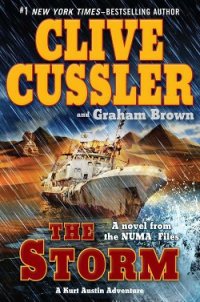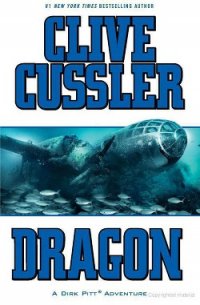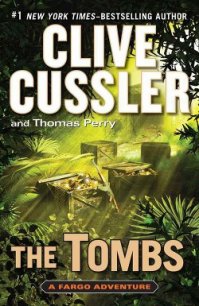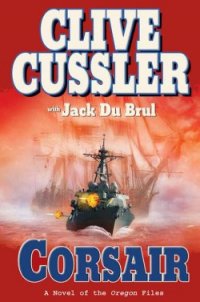The Jungle - Cussler Clive (читать книги без .TXT) 📗
“Linda!”
MAX JUMPED FROM the 520 as soon as its skids kissed the deck and ran crouched under the whirling disc of its rotors. He had two football fields to cover before he even reached the fortresslike superstructure. He knew after the first dozen steps that he was woefully out of shape. Yet he kept moving, his stout legs pumping, his arms sawing back and forth. Behind him, Gomez settled the chopper and cut the turbine.
It was only when he reached the slab-sided pontoon float that Max realized they had made a critical error. The pontoon stretched the entire width of the Hercules’s deck and was as sheer as a cliff, a vertical wall of steel nearly thirty feet tall without a ladder or handhold. The ship’s crew would need access to the aft of the vessel during transit, so he began retracing his steps, looking for a hatch.
“What’s wrong?” Adams asked. He’d ditched his flight helmet and unzipped his one-piece jumpsuit to the navel.
“There’s no way over the float. Look for an access hatch.”
The two men scoured the deck to no avail. The only way to get to the superstructure was over the oil rig’s two enormous pontoons, an impossible feat for either man.
“Okay,” Hanley said, coming up with an alternative. “Let’s get back to the chopper. There must be someplace on the superstructure where you can hover and I can jump.”
Because the engine was still hot, they were airborne a few moments later. The Hercules’s bow was a jumble of equipment and antennae, and the roof of the pilothouse was obscured by the guy wires supporting its radar mast. Gomez Adams had thousands of hours at the controls of nearly every helicopter in the world and could thread a needle with the MD 520N, but there was simply no place large and open enough for Max to safely jump. After five frantic minutes, Adams banked away.
“New plan,” Hanley announced. “Put me on top of the forwardmost pontoon.”
He climbed between the two front seats and rummaged around in the emergency kit for twenty feet of half-inch nylon rope. It wasn’t long enough, but it would have to do.
Adams edged the helo under the soaring platform and just above the rust-red pontoon, the rotordraft buffeting them from above and below. He held the 520 rock steady with its skids just inches above the pontoon so that Max merely had to step out of the craft and onto the rig itself. Gomez pulled away once again and settled the chopper onto the fantail. He throttled down the Rolls-Royce turbine but didn’t cut it completely.
As soon as he was down, Max tied off one end of the rope to a support bracket near the rig’s stout leg and tossed the other end over the side. It hung a good fifteen feet from the deck of the Hercules . He groaned.
“I’m getting too old for this stuff.”
He maneuvered until his legs dangled over the pontoon and slowly lowered himself down the rope, clutching tightly with his thighs because he feared his belly was more of a load than his arms could take. When he reached the rope’s end, he simply let go.
The deck slammed into his feet, compressing every vertebra in his spine and sending electric jolts of pain throughout his body. He hadn’t rolled properly, and that mistake cost him a thrown back. He strung together a run-on sentence of expletives the likes of which he hadn’t uttered since his days in Vietnam.
Slowly getting to his feet, he shuffled toward the rear of the superstructure. But where others would collapse in pain, Max gutted it out, moving like an old man but moving nevertheless.
“How are you coming down there?” The question was tinny and indistinct. Then he remembered the walkie-talkie clipped to his belt.
He raised it to his lips. “I threw my damned back out, but I’m almost to the superstructure. How about you?”
“The door to the accommodations block is welded shut,” Cabrillo replied. “I busted out a window and yelled for Linda, but I got nothing back.”
“Can you crawl through?”
“No, it’s just a small porthole. I’m looking around now for another way in. This thing’s built tighter than a castle.”
“Some rescue team we are, huh?”
“We’ll get her back,” Cabrillo said with utter certainty.
Max continued on, a fist pressed to his lower back to ease some of the pain. The superstructure was painted in a dull white that showed the ship’s hard years of operation. Corrosion ate at the metal in places, leaving behind rust streaks that drizzled down her plating. There were two hatches giving access to the interior spaces, and when Hanley reached the first one, he found that it had been locked from the inside. He tried pulling on the handle harder.
The second door was also battened down. He looked up. A catwalk ran the width of the building-sized superstructure, but it was twenty feet above him. Farther up on the bridge deck was a second walkway, and above that loomed two squared-off funnels covered in soot. There were no windows, and no way to access anything forward. Max was trapped, and he had noticed since they’d landed that the Hercules’s list had noticeably steepened.
CABRILLO WALKED AROUND the accommodations block, searching for any way inside. Two sides of it abutted the edges of the rig and were nothing more than open grilles over the water, with handrails at waist height. There were two more doors, but each was locked from the inside.
Staring up the blank sides of the structure, he saw that a pulley had been rigged in order to fly a flag off an aerial that rose ten feet above the roof. The metal cord was badly abraded and fraying, but it just might work.
He opened the turnbuckle that converted the wire into a continuous loop and looked around for something to tie off one end. A half-full drum sat a short distance away. Able to use only one hand, he took several minutes to walk it closer to the pulley. He lost more precious time tying off an end of the wire around the middle of the barrel. If the knot failed, he’d probably break his neck, so it had to be perfect.
Then he made a one-foot loop in the other end of the wire. The hardest part was wrestling the metal drum onto its side. He had to get down low and press with his back and legs, straining to tip the barrel until it crashed over with a sloshing clang. He slipped his foot through the loop and pushed the barrel so it was parallel with the rig’s deepening incline.
For a few seconds, his weight was enough to keep him anchored to the ground, so he put his other foot against the barrel and gave it a shove. Gravity did the rest. The drum started rolling across the deck, and, as it did, the wire went through the pulley, and Cabrillo made a stately ascent up the side of the building, his foot in the loop, his good hand clutching the line. He made it to the roof in just a couple of seconds and nimbly jumped clear. The loop jammed in the pulley, arresting the barrel’s journey across the deck.
The top of the block was a maze of looping vents and commercial-grade air handlers. It took Cabrillo a few minutes to figure out which trunk lines went into the building and which were the returns. When he knew which one he wanted, he flicked open a pocketknife. It was an Emerson CQC (Close Quarters Combat) that Linc had turned him on to.
Rather than mess around with the tarred screws securing the two-foot-square ducts, Juan plunged the blade straight through the metal and hacked open a big enough hole like he was slicing paper. There wasn’t a mark on the blade when he was done.
He crawled into the duct, mindful of his aching shoulder, and slithered forward until he came to an elbow that bent down through the roof. The insides of the duct were coated in a thick layer of dust that clouded around his head with every movement and forced him to sneeze hard enough that he banged his head. Just enough light leaked through the opening and around his body for him to see that the duct dropped away four feet and then bent in another ninety-degree corner.




